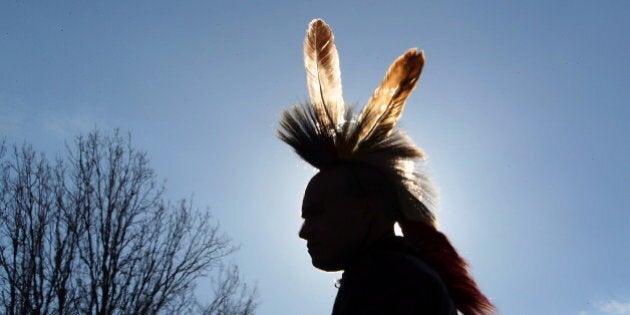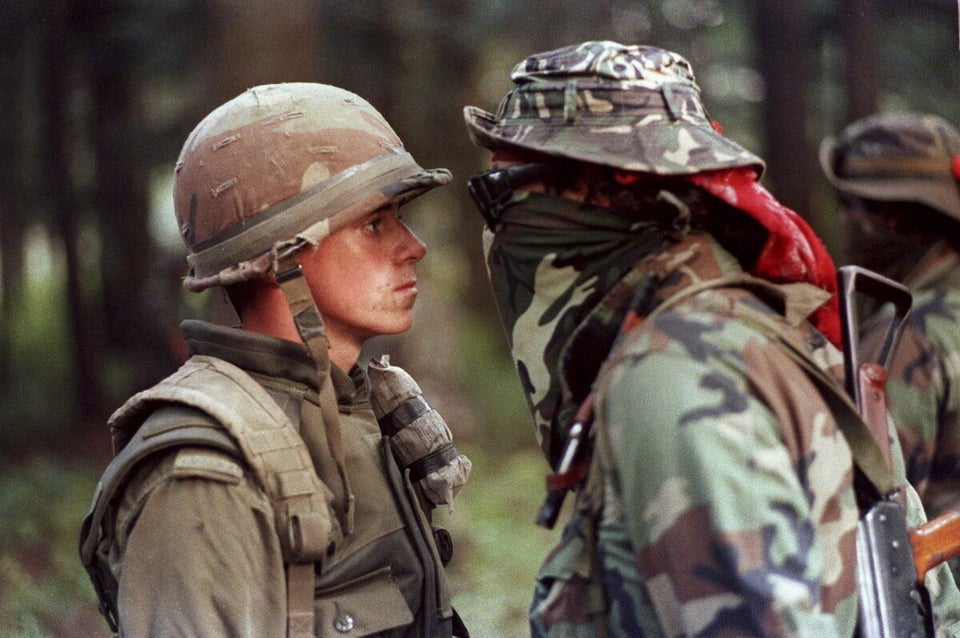
It's an interesting time in the world of First Nations politics. The past week has seen the resignation of National Chief Shawn A-in-Chut Atleo, the shelving of Bill C-33, the First Nations Control of First Nations Education Act, and the Assembly of First Nations scramble to make arrangements to respond.
Now, some are criticizing First Nations leaders for not accepting the proposed bill and its increased funding. Others are questioning whether the AFN has past its "best before" date.
Dissolving the AFN is not the right course of action. There is clearly a need for a national organization for First Nations people. The Assembly, and its forerunner the National Indian Brotherhood, has been instrumental in seeking justice for Residential School Survivors and fighting for Aboriginal and Treaty Rights. That is not a legacy to be discarded.
It is clear however, that it is time for the AFN to evolve. Here are some ideas for how that might happen.
Propose an alternative to Bill C-33
Bill C-33 was an attempt to fix a major structural inequality stacked against First Nations kids: schools on reserve get about $4,000 less per student per year than do provincial schools. The fact that there is even a controversy about how to set that right reveals an uncomfortable truth about our country: in the year 2014 First Nations people still have to negotiate for equality.
Be that as it may, there are many First Nations teachers and parents who are unhappy the bill is on hold. There is also a risk that the mainstream public ends up blaming the AFN for this. The AFN should step up and answer that critique with a counter offer to the federal government.
To really close the funding gap on reserve would likely require at least $40 million more in core operating funds per year than what has been proposed. That might be a starting point. The AFN should also define a structure to make sure First Nations schools perform academically while also delivering on culture and language. Where First Nations need help doing that, help them. Where First Nations are already doing that, get out of the way. A credible alternative to Bill C-33 will also describe how First Nations education authorities will be financially transparent, not necessarily to the Federal government, but definitely to First Nations citizens.
What is in such an alternative proposal matters, but how that proposal is designed matters at least as much. If the AFN wants to get it right, they should seek out the voices of First Nations educators, administrators, parents, elders and children. This is a chance to show other levels of government what true consultation looks like -- by doing it ourselves. Technology makes it possible to do this without a huge travel budget. If you want to engage First Nations parents, you should probably do it on Facebook. And if comedian Ryan McMahon can have a Spreecast to educate Indigenous people about legislation, the AFN should be able to as well.
Return to consensus building
It is clear there is a division among First Nations leaders in the country. Some favour a more incremental, conciliatory approach and others prefer a harder line, confrontational approach.
Each path has its own value. On the one hand, negotiations and relationship building has lead to more control over health and education for some First Nations groups. On the other hand, confrontation has sometimes been the only tool that Indigenous people have to make their voices heard.
Neither side is going to go home and stay quiet any time soon. It is time for both types of leader to start coordinating with the other. Regardless of which approach they prefer, First Nations leaders generally want the same things: good lives for their people and self-determination for their communities. Starting with that common understanding and strategizing together, Chiefs could employ a multitude of tactics for the benefit of First Nations people. The Indian Residential School Settlement Agreement for example, came about by having both conciliatory voices at the table, but also the prospect of court room confrontations in the form of multi-billion dollar class action lawsuits looming in the background.
If First Nations leaders came together, it would change the narrative of the past few years from one of in-fighting to one of a slow, albeit very messy process of consensus building.
Move to one Indian, one vote -- sort of
The current model of choosing the National Chief of the AFN is a bit like as if all the mayors of Canada got together every three years to choose our Prime Minister. The analogy is not perfect because the National Chief does not have the executive power of a head of state, but the point is that grassroots First Nations people do not directly choose the person who the rest of the country views as their leader.
The AFN-NIB was founded by great people like Harold Cardinal, George Manuel and others. It made sense for them to organize around the Chiefs, because that was the political power structure available to them at the time.
If Idle No More has taught us anything however, it is that grassroots people have extraordinary power today. Through social media and protest, the voices of tens of thousands of Indigenous people were strong enough to bring the Prime Minister to the table in January 2013. They have also played a role in the latest controversy over the education bill.
The grassroots want in and their voices deserve to be heard. A move towards extending the vote to all First Nations people would help do that. It would be challenging, especially the first time around, but it would also provide the AFN leadership with direction directly from the people they serve.
The vote of the Chiefs should still carry weight though. The voice of smaller First Nations communities with only 50 or 100 members would be completely drowned out in the Assembly with a pure "one Indian, one vote" system. Those communities are among the most marginalized in the land and they deserve to have a legitimate influence on choosing their national representative. A hybrid approach which weighted half of the vote to the First Nations public and the other half to the Chiefs might be a good way to reconcile the desires of the grassroots with the need to fairly represent all First Nations communities.
Moving Forward
If the AFN can come together and start forming consensus based on the direction of all First Nations people, not only will it survive but it will emerge from this period strengthened. Then it can move to the other interesting discussions like becoming independent of Government funding, defining citizenship and being more inclusive of those living off-reserve.
ALSO ON HUFFPOST:
